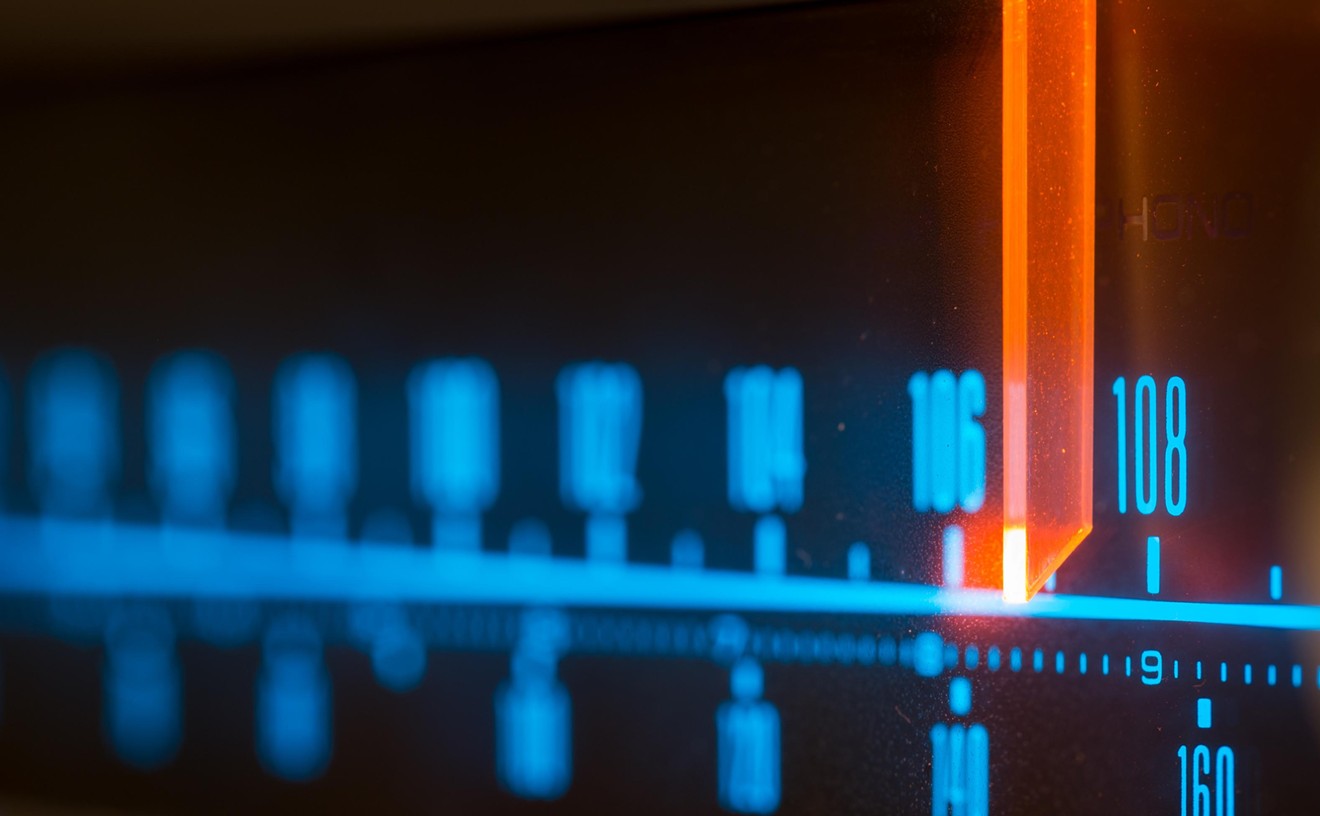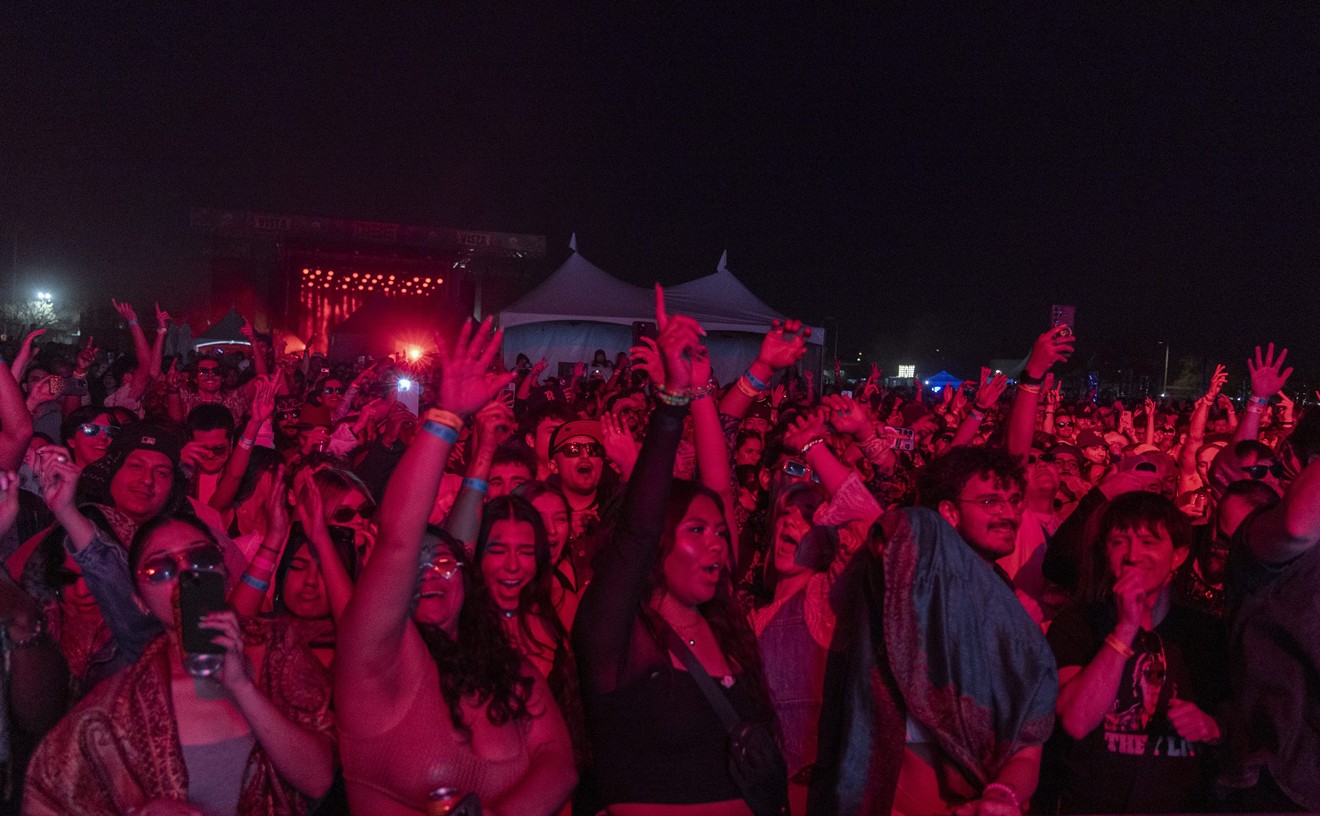The closure has caught many recording studios with outstanding tape orders scrambling to look for every used reel they can bulk erase. It wasn't that long ago that the mark of a desirable professional recording studio was having a Studer two-inch tape 24-track recorder in the corner. Otto D'Agnolo, owner of Chaton Studios, one of the longest-running big rooms in the Valley, isn't happy about the Quantegy "restructuring," but admits, "I probably haven't ordered tape in about two years and haven't fired up the machine in nearly that long."
Since he first recorded as a client at Chaton in 1989, D'Agnolo's seen advancing digital recording technology (ADAT) scare a lot of people out of the recording business. "Studios have been closing since ADAT studios popped up 15 years ago, and you can still see major studios on the decline," he says. "Strangely enough, there are still just as many what I'd consider 'pro rooms,' three or four, as there were before, but there's about 150 Pro Tools studios in town, which there never was before."
One would figure that the proliferation of easy home recording facilities would've lessened the demand for professional studios in the Valley, but guess what? Popular, more established studios like Chaton in Phoenix, Mind's Eye and Flying Blanket in Mesa, and the Gray Room in Glendale are all looking at full calendar schedules, and, in some Bizarro-world twist, home studios can be credited with actually helping business.
"The blessing of home recording is that I don't do demos anymore," says D'Agnolo. "There's no excuse to do things halfway anymore. People actually get to do demos very inexpensively and learn the art of recording, arranging and songwriting at somebody's house. And then we get the call after a band's made three or four records and is ready."
Such was the case of . . . and guppies eat their young, perhaps one of Phoenix's more prolific outfits. The band had squeezed out 11 releases in seven years, with all but the last three recorded on four-track cassette. The band's singer-songwriter, Brock Ruggles, says, "We're set up so we can record rehearsals and those things into albums. The technology is so accessible -- the process has become so democratized. Before the '90s, you had to have access to reel-to-reel machines and studios. In the '90s, everybody started recording on four-track cassette, and now in the last five years, the digital age is here with a vengeance. While I love lo-fi sound, I don't think it's something that people were striving for. If they could've recorded on better equipment, they would've."
It was the part about having to wear too many hats during home recording that led the group to take basic tracks recorded at home and finish them in the Gray Room with Mark Kopenits' set of ears to fall back on. The group will record its next album entirely at the Gray Room studio with Mark Kopenits producing.
Recalling his method of recording Tramps and Thieves, Kopenits prefers "having the band recording in the same room, overdub so the band can look each other in the eye, and then overdub what's necessary to overdub later. I get them to do everything in the first take, get what I can, and get rid of what I have to."
Kopenits recognizes the predisposition for many engineers to overuse the technology. "A band comes in, sets up the equipment, goes through the tune, and the engineer says, 'Thank you.' 'Well, whaddaya mean, that stunk.' 'Well, we have Pro Tools.' I'm guilty of playing with Pro Tools. I'll fly in a snare hit from another record to replace a side hit that sounds weak, but I'll do it on my time," he says.
"No Pro Tools, 'cause Pro Tools is the work of the devil," stresses Bob Hoag of Flying Blanket Studios, where The Format and Before Braille cut their debut recordings. Hoag prefers getting the band to work on its strengths and weaknesses through home demos before coming to the studio. "Just because you've been playing something a certain way for six months doesn't mean it's the right and best way to play something. If a band wants me to produce, I try to get people to do things that make them nervous -- usually a sign we're on the right track -- you know, push boundaries a little. On my own band's records, I was fortunate to have had some really great producers and songwriters school me on song structure and record production, concepts which I hope I'm passing on to others."
Like most studio owners, Larry Love of Mind's Eye is happiest when he is producing, working with a band in preproduction, and fine-tuning the songs. Case in point: He's just produced a local band called 32 Leaves for Double Blind, a large indie distributed by Caroline. "They're from here, and they're amazing," he says. "They managed to win an on-air contest at KUPD with unmixed Pro Tool files."
"Everyone can have a home studio in their bedroom and buy a couple of good mikes at Guitar Center and come up with a decent sound. What they can't do is get years of experience of a producer and a songwriter, trying to get the best snare drum sound you ever heard, if you don't know what you're doing." says Love, former guitarist for Bionic Jive, who started Mind's Eye when ADAT technology was in its infancy some 12 years ago. "People who bring in the last Perfect Circle record and want to sound like that aren't going to get that at home. It's too fidelic. But I know how to get it." And when bands bring in Bionic Jive recordings, he knows how to get that sound, too.
"While ADAT hurt the more professional recording studios for a while," says D'Agnolo, "everybody's been through that phase, and the town is big enough now and the market's big enough now to support the studios. While the industry shrunk, the town grew, so the size of the pie stayed the same." And as for our old friend Mr. Analog, don't despair. "I wouldn't be surprised if some company in another country will make an offer to buy the gear that's worth nothing to Quantegy now and start making reels of tape," D'Agnolo says. "It'll be enough business for a small business to make a living."
How true -- Kodak went all digital last year, but you can still get Instamatic film in Mexico.









